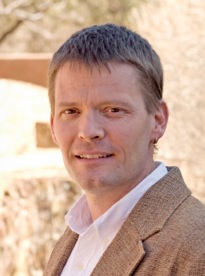Affiliation: University of North Florida

John Kantner is Professor with the Department of Sociology, Anthropology and Social Work at the University of North Florida, where he is also Associate Vice President for Research and Dean of the Graduate School. He holds his degrees from University of California, Santa Barbara (M.A. and Ph.D.) and the Colorado College. His research interests include anthropological archaeology, evolutionary theory, decision theory, human behavioral ecology, Geographic Information Science, ceramic analysis, and the U.S. Southwest. archaeology, development of sociopolitical complexity, evolutionary theory, the U.S. Southwest and Plains, Andean South America, and Central America, spatial analysis and GIS, and ceramic analysis. Professor Kantner’s recent publications include Recent publications include “Reconstructing sexual divisions of labor from fingerprints on Ancestral Puebloan pottery” in Proceedings of the National Academy of Sciences archaeology, development of sociopolitical complexity, evolutionary theory, the U.S. Southwest and Plains, Andean South America, and Central America, spatial analysis and GIS, and ceramic analysis. Professor Kantner’s recent publications include 116(25): 12220–12225 (with David McKinney, Michele Pierson, Shaza Wester).
The ancient ruins of Chaco Canyon in northwestern New Mexico stir our imagination with questions about their origins, purpose, and demise. Historically, research has concentrated on the stunning architecture and what transpired within the canyon walls. In the past few decades, however, archaeologists have turned to a consideration of Chaco’s tremendous impact across the American Southwest, especially in distant villages that lived in the shadow of Chaco Canyon. In this colorfully illustrated lecture, Southwest archaeologist John Kantner describes how new interdisciplinary research is answering critical questions about the ancient Chacoan world.
Short bibliography and/or website on lecture topic:
Chaco Research Archive, http://www.chacoarchive.org/cra/
Clark, Jeffery J. and Barbara J. Mills (editors). 2018. Chacoan archaeology at the 21st Century: New Questions and Ongoing Revelations. Special issue of Archaeology Southwest Magazine 32(2–3).
Kantner, John. 2004. Ancient Puebloan Southwest. Cambridge: Cambridge University Press.
Kantner, John, and Ronald Hobgood. 2016. A GIS-based viewshed analysis of Chacoan tower kivas in the US Southwest: Are they for seeing or to be seen? Antiquity 90(5):1302–1317.
New Mexico History.org, http://newmexicohistory.org/places/chaco-canyon
The stunning monumental buildings in Chaco Canyon have yielded some of the most amazing artifacts ever found in ancient North Americat. Thousands of turquoise ornaments, copper bells and chocolate from Mesoamerica, and shell trumpets from the Pacific Ocean are just some of the rare and beautiful objects found by archaeologists in the 1,000-year-old edifices of this remote canyon. But while today we marvel at these treasures, what did they mean to the ancient Puebloan people who lived in the Chaco World?
Dr. John Kantner has spent almost three decades conducting archaeological investigations of Chaco Canyon and the villages that helped to sustain the thriving pilgrimage center. Much of his work considers what was valuable to Chaco-era people and how wealth may have been used in the past. In this illustrated lecture, Dr. Kantner discusses what we know about Chacoan notions of wealth and value, and how these concepts may have changed over time.
Short bibliography and/or website on lecture topic:
Chaco Research Archive, http://www.chacoarchive.org/cra/
Clark, Jeffery J. and Barbara J. Mills (editors). 2018. Chacoan archaeology at the 21st Century: New Questions and Ongoing Revelations. Special issue of Archaeology Southwest Magazine. Vol. 32 Nos. 2–3.
Kantner, John. 2004. Ancient Puebloan Southwest. Cambridge: Cambridge University Press.
New Mexico History.org, http://newmexicohistory.org/places/chaco-canyon